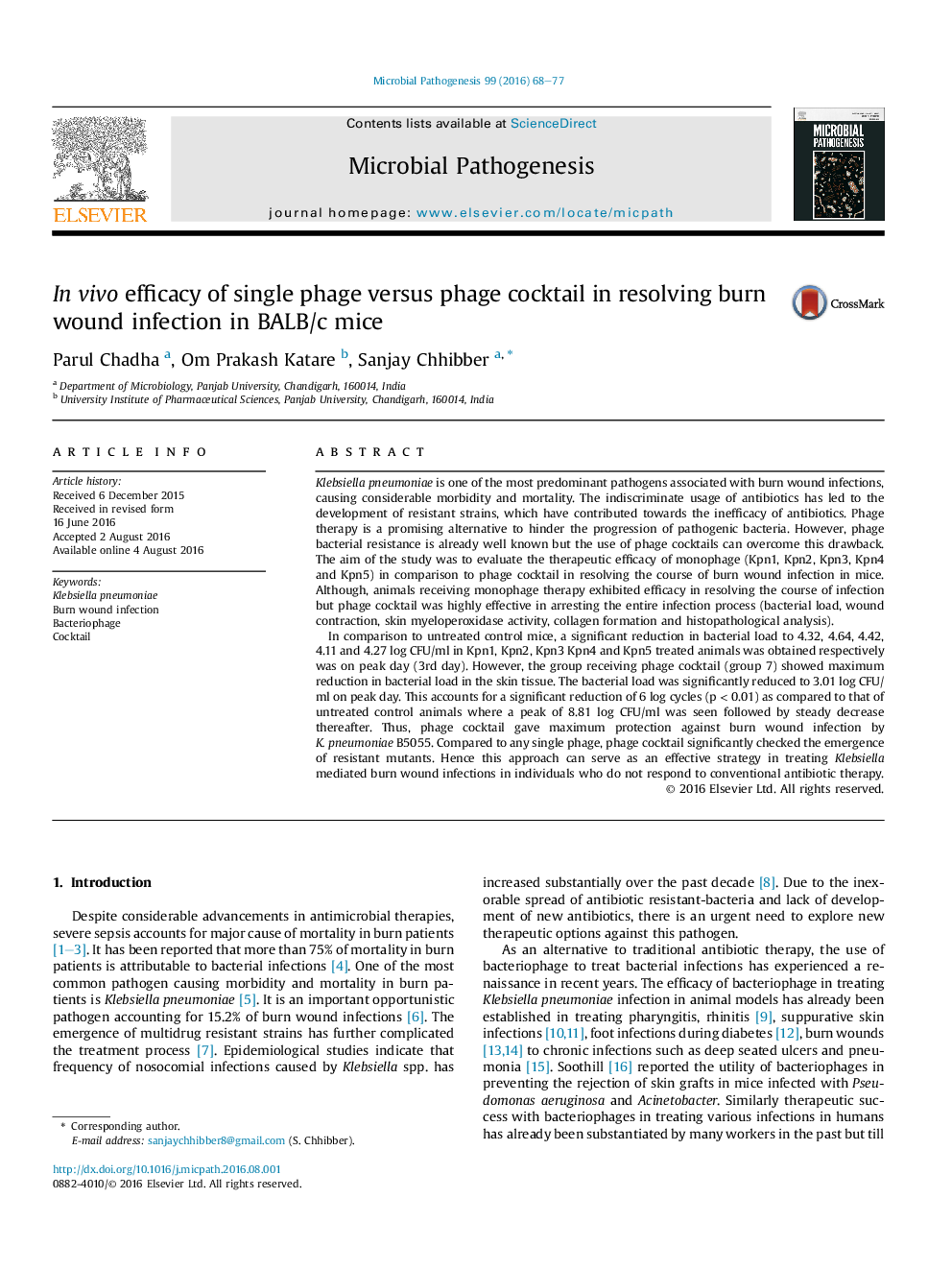| کد مقاله | کد نشریه | سال انتشار | مقاله انگلیسی | نسخه تمام متن |
|---|---|---|---|---|
| 3416270 | 1593690 | 2016 | 10 صفحه PDF | دانلود رایگان |

• Five phages sharing broadest host range were used for preparation of phage cocktail.
• In vitro, phage cocktail was an effective bio-control agent relative to monophage.
• Phage cocktail significantly reduced the emergence of resistant mutants.
• Phage cocktail: Effective in arresting infection process in thermally injured mice.
Klebsiella pneumoniae is one of the most predominant pathogens associated with burn wound infections, causing considerable morbidity and mortality. The indiscriminate usage of antibiotics has led to the development of resistant strains, which have contributed towards the inefficacy of antibiotics. Phage therapy is a promising alternative to hinder the progression of pathogenic bacteria. However, phage bacterial resistance is already well known but the use of phage cocktails can overcome this drawback. The aim of the study was to evaluate the therapeutic efficacy of monophage (Kpn1, Kpn2, Kpn3, Kpn4 and Kpn5) in comparison to phage cocktail in resolving the course of burn wound infection in mice. Although, animals receiving monophage therapy exhibited efficacy in resolving the course of infection but phage cocktail was highly effective in arresting the entire infection process (bacterial load, wound contraction, skin myeloperoxidase activity, collagen formation and histopathological analysis).In comparison to untreated control mice, a significant reduction in bacterial load to 4.32, 4.64, 4.42, 4.11 and 4.27 log CFU/ml in Kpn1, Kpn2, Kpn3 Kpn4 and Kpn5 treated animals was obtained respectively was on peak day (3rd day). However, the group receiving phage cocktail (group 7) showed maximum reduction in bacterial load in the skin tissue. The bacterial load was significantly reduced to 3.01 log CFU/ml on peak day. This accounts for a significant reduction of 6 log cycles (p < 0.01) as compared to that of untreated control animals where a peak of 8.81 log CFU/ml was seen followed by steady decrease thereafter. Thus, phage cocktail gave maximum protection against burn wound infection by K. pneumoniae B5055. Compared to any single phage, phage cocktail significantly checked the emergence of resistant mutants. Hence this approach can serve as an effective strategy in treating Klebsiella mediated burn wound infections in individuals who do not respond to conventional antibiotic therapy.
Journal: Microbial Pathogenesis - Volume 99, October 2016, Pages 68–77